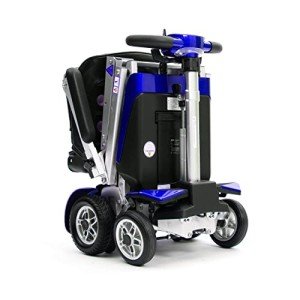A Comprehensive Guide to Buying a Mobility Scooter
Mobility scooters have become an important tool for many individuals seeking to boost their independence and mobility. With a large selection of designs and functions readily available, choosing the ideal mobility scooter can be intimidating. This post provides a helpful guide to help consumers browse their alternatives, examine their needs, and make a notified purchase.
Understanding Mobility Scooters
Mobility scooters are electric vehicles designed for individuals who experience mobility challenges. They are particularly useful for elders, those with specials needs, or people recuperating from injuries. Mobility scooters can differ commonly in regards to style, functions, and prices.
Types of Mobility Scooters
Before embarking on a purchase, it's important to comprehend the different types of mobility scooters available:
Three-Wheel Scooters:
- Generally more maneuverable in tight spaces
- Lightweight and portable
- Perfect for indoor usage
Four-Wheel Scooters:
- Offer higher stability and balance
- Appropriate for outdoor use over different surfaces
- Generally have a longer battery life
Foldable/Portable Scooters:
- Designed to be quickly transferred and kept
- Can frequently fit in the trunk of a car
- Suitable for those who take a trip frequently
Durable Scooters:
- Built to accommodate bigger individuals
- Often included more robust functions for outdoor usage
- Typically equipped with bigger batteries for extended range
Elements to Consider When Buying a Mobility Scooter
1. Weight Capacity
Select a mobility scooter that can support the user's weight. Most scooters have a weight limit varying from 250 to 500 pounds. It is crucial to make sure that the scooter can accommodate the user comfortably.
2. Range and Battery Life
The range is how far the mobility scooter can travel on a single charge. Common varieties differ in between 10 to 30 miles. Consider the user's everyday activities and choose a scooter with an appropriate range.
3. Scooter Dimensions
Consider the size of the scooter, including its weight and dimensions. A more compact scooter might be perfect for narrow hallways and tight areas, while larger designs use additional stability and comfort.
4. Terrain Capability
Assess where the scooter will mainly be used. If link home to travel mostly on pavement, a lightweight model might be adequate. However, if the user needs to pass through gravel or uneven surface areas, consider a four-wheel scooter built for off-road usage.
Leading Features to Look For
Comfort
- Adjustable Seats: Look for scooters with cushioned and height-adjustable seats to guarantee comfort throughout travel.
- Armrests: These boost safety and assistance while browsing.
Security and Visibility
- Headlights and Taillights: Essential for nighttime usage.
- Turn Signals and Reflectors: Improve presence and security while on the roadway.
User-Friendly Controls
- Joystick or Drive Controls: These ought to be instinctive and simple to manipulate.
- Easy-to-Read Displays: A control board that reveals battery life, speed, and range can improve the user experience.
Additional Features
- Storage Compartments: These provide included convenience for bring individual products while on the go.
- Weather Protection: Consider models with rain covers or windshields if used in variable weather.
Expense Considerations
When budgeting for a mobility scooter, rates can range anywhere from ₤ 500 to over ₤ 5,000 depending upon the design, features, and brand. Extra costs may include:
- Extended Warranty: Protects against problems and can conserve money in the long run.
- Accessories: Optional functions, such as upgraded seats, lights, or storage options.
| Function | Cost Range |
|---|---|
| Basic Models | ₤ 500 - ₤ 1,500 |
| Mid-Range Models | ₤ 1,500 - ₤ 3,000 |
| High-End Models | ₤ 3,000 - ₤ 5,000 |
Funding Options
Lots of retailers offer financing strategies, and some city government initiatives might offer grants or help for those in need. Investigate possible financial support with neighborhood resources or mobility service organizations.
FAQs about Buying a Mobility Scooter
What is the difference between a mobility scooter and a wheelchair?
Mobility scooters are motorized and permit users to browse separately, while wheelchairs may require physical help or manual operation.
How do I maintain a mobility scooter?
Routine maintenance involves inspecting battery life, cleaning up the scooter, and checking tires and brakes. Constantly refer to the user handbook for specific standards.
Can mobility scooters be utilized inside?
Yes, lots of models are developed for both indoor and outside usage. Nevertheless, three-wheel scooters tend to be better suited for indoor navigation due to their tighter turning radius.
Are mobility scooters covered by insurance?
Some insurance coverage prepares cover a part of the expenses for mobility scooters if they are deemed clinically essential. Contact your service provider for specific information.
How fast can a mobility scooter go?
Many mobility scooters have an optimal speed ranging from 4 to 8 mph. However, the appropriate rate may differ depending on regional regulations.
Acquiring a mobility scooter can significantly improve one's independence and lifestyle. By understanding the types, functions, and costs connected with mobility scooters, potential buyers can make knowledgeable decisions that suit their requirements and preferences. Customization and comprehensive research are essential to ensuring satisfaction with this crucial investment.

